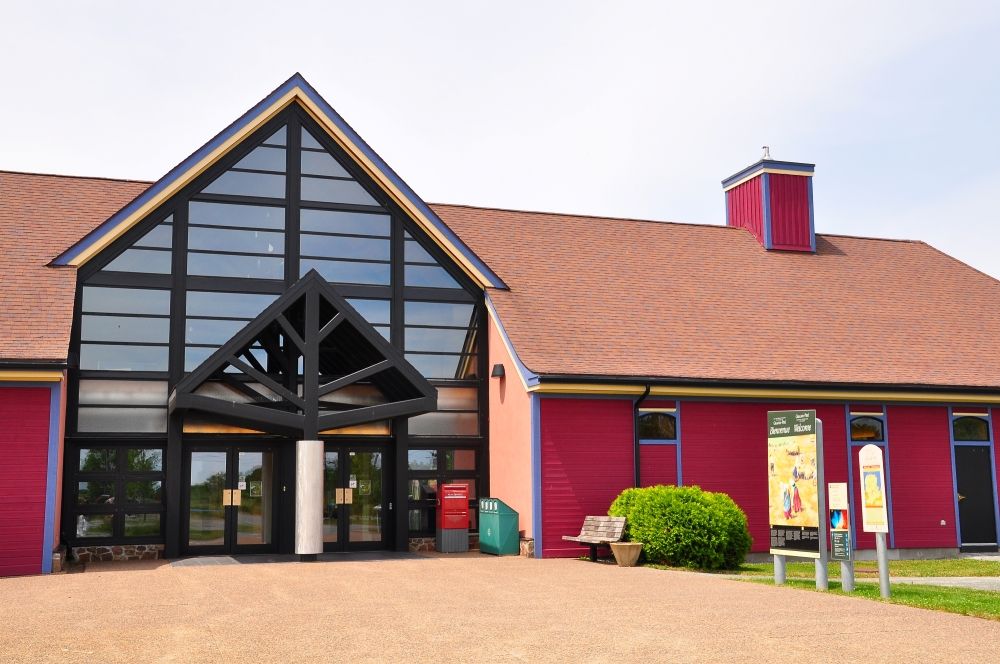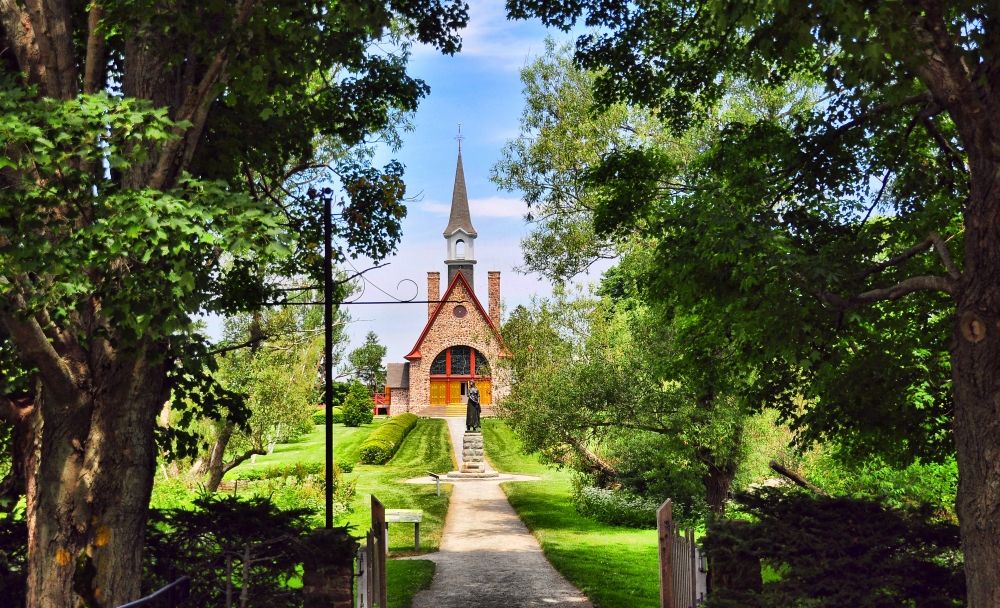Landscape of Grand Pré
by Nancie McKinnon
What is Landscape of Grand Pré?
Landscape of Grand-Pré Historical Site, located just north of Wolfville, Nova Scotia, Canada, commemorates the expulsion of the Acadians: French settlers who lived the area between 1682 and 1755, when they were expelled by the English. In French, this event is commonly known as Le Grand Dérangement.
Disclosure: This article contains affiliate links. Making a purchase through an affiliate link will mean a small commission for this website. This will not affect your price.
The site features commemorative buildings, archeological remains and a variety of objects reflecting the presence of Acadians in the village of Grand-Pré and memorializing their expulsion. The UNESCO designation covers about 1,111 hectares (2745 acres) of agricultural land as well.

Why is Grand-Pré a UNESCO World Heritage site?
Grand Pré was designated as a UNESCO World Heritage site in 2012 because of its cultural and historical significance as the center of Acadian settlement in Nova Scotia, Canada. The site is recognized as a symbol of the Acadian people’s perseverance and determination in the face of adversity. Acadians around the world consider Grand-Pré to be the center of their historical homeland. According to UNESCO, “Its memorial constructions form the centre of the symbolic re-appropriation of the land of their origins by the Acadians, in the 20th century, in a spirit of peace and cultural sharing with the English-speaking community.”
In addition, the landcape around the towns of Grand Pre and Hortonville was shaped in the 17th century by the Acadians using dykes and a sluice system made of wood. This allowed them to create rich agricultural land despite huge tidal ranges of 11.6 meters or 38 feet on average.

What can you expect on a visit to Grand-Pré?
Begin your visit to Grand-Pré National Historic Site at the interpretive center, which houses a museum, a theatre, a gift shop and washroom facilities. The museum provides visitors with a replica of the dyke system built by the Acadians to keep the high Bay of Fundy tides at bay, and still in use today. Don’t miss the Parks Canada 20-minute film providing an accurate account of the 1755 banishment of the Acadians by the British.
Leaving the back door of the center, the path leads to the statue of Evangeline, a fictional character in Henry Wadsworth’s 1847 poem of the same name. The poem, loved by many, describes the marriage of Evangeline to her beloved and their subsequent separation when the British expel the Acadians from Acadie.
Walk further up the path to the Memorial Chapel, and enter and admire the gorgeous stained-glass windows.
After leaving the chapel take the path up the hill to enjoy the views from the Landscape Grand-Pré Park.

As you plan your trip in Canada, take a look at the other Canadian UNESCO sites.
Is Grand-Pré worth visiting?
Absolutely! Grand-Pré has something to offer every visitor. History buffs love Acadian history and learning about the 1755 expulsion. Kids can run and play on the lawns. Engineers are intrigued by the still-functioning dyke systems. The landscape, the chapel, and the statue of Evangeline are a photographer’s delight. Stay overnight in your own oTENTik and do some serious star gazing.
Find other accommodations near Grand Pré using the map below:
Tips for visiting Grand-Pré
Should you visit on August 15th, you can enjoy Acadian Day festivities. Be sure to sample rappie pie, a famous Acadian dish made with delicious potato and chicken.
Visitors can camp overnight in the fields west of the interpretive center. Park Canada offers accommodation in eight oTENTik structures, described as a cross between a tent and a cabin. You can learn more about this unique accommodation by visiting the Parks Canada website.
The site is open year-round. In July and August you can join a guided tour.
Walking around the site is easy, but it’s always good to wear comfortable, supportive walking shoes. In summer, bring along some water, a sun hat, and sunscreen. Wear appropriate cold-weather clothing during the winter months.
Compare rental car prices and companies here.
Where is Grand Pré?
Grand-Pré, Nova Scotia, B0P 1M0 (Follow the Parks Canada signs).
From Halifax: Take Hwy 102 to Exit 4B (Annapolis Valley). Leave the highway at Exit 10 (Grand-Pré), then drive to the gas station and turn right. Go straight until you reach the parking lot. (Again, look for the Parks Canada signs).
For more information about Landscape of Grand-Pré, its opening hours and admission fees, see the Parks Canada website.
Have you been to Landscape of Grand-Pré? If so, do you have any additional information or advice about this UNESCO World Heritage site? Please add your comments below!
